- Opening hours: From 7:30am
- Closing hours: May vary depending on the month.
- Last entry: 90 minutes before closing.
Auschwitz-Birkenau Guided Tour with Fast-Track Tickets & Transfer Options
From Krakow: Auschwitz-Birkenau Guided Tour with Transfers
From Krakow: Auschwitz-Birkenau & Wieliczka Salt Mine Guided Tour
From Krakow: Auschwitz-Birkenau & Oskar Schindler's Factory Guided Tour
The largest Nazi concentration camp built in occupied Europe, Auschwitz-Birkenau has become a significant site in the history of the Holocaust. Visiting Auschwitz will allow you to view artifacts, the execution and imprisonment sites, and thousands of preserved objects. A somber and emotional visit, the time you spend at the Auschwitz concentration camp allows you to pay tribute to the many victims of the genocide.
Auschwitz-Birkenau was the largest of the Nazi concentration and extermination camps, operating between 1940 and 1945. Originally established for Polish political prisoners, it evolved into a site of mass genocide during World War II, where over 1.1 million people, were systematically murdered. Today, Auschwitz stands as a memorial and museum, preserving the memory of the Holocaust.
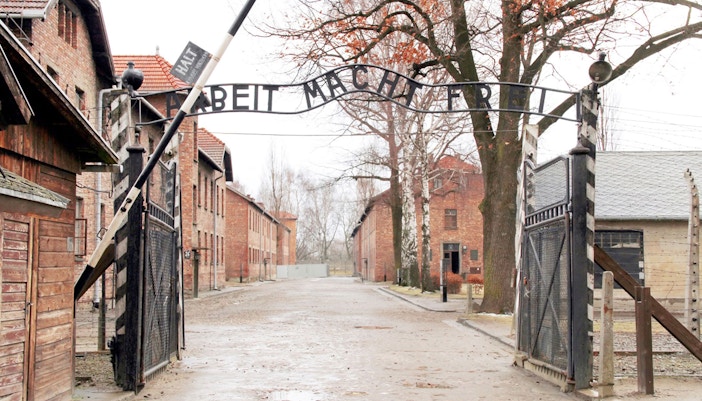
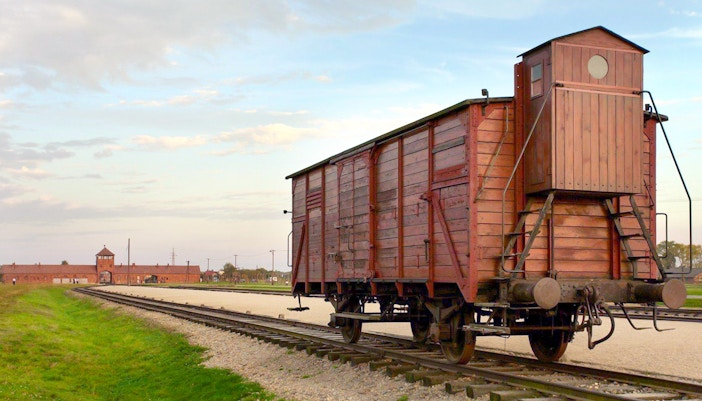
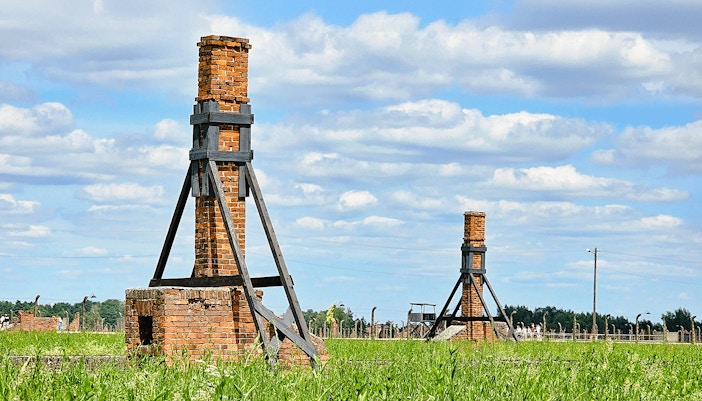
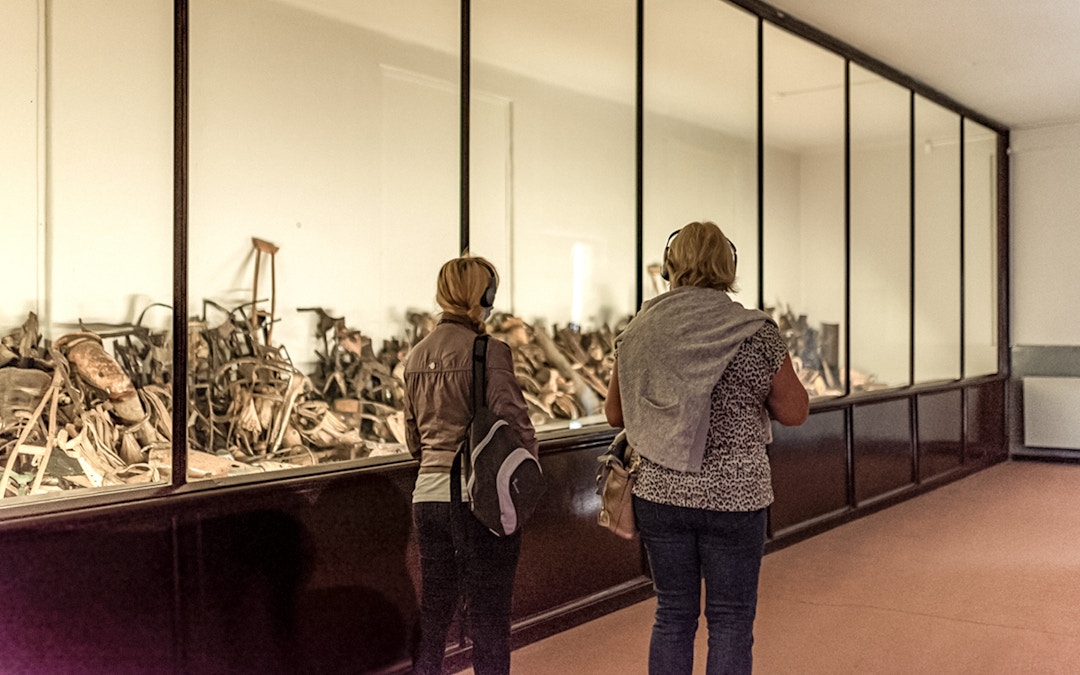
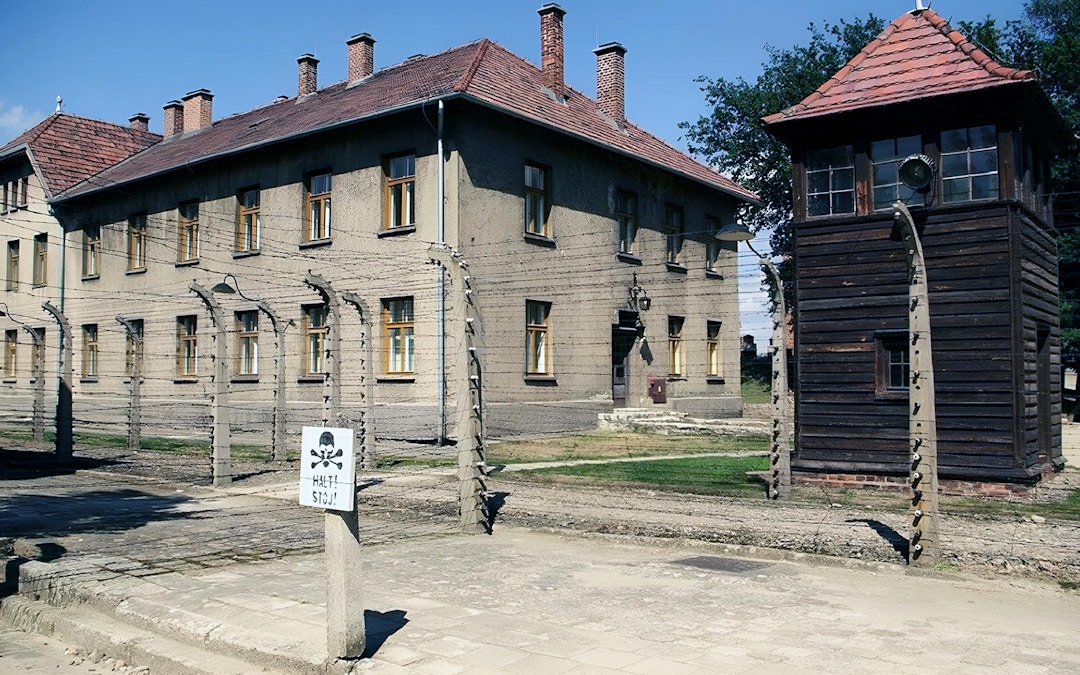
The Auschwitz concentration camp has two sections, Auschwitz I, the primary camp, and Auschwitz II-Birkenau, which is located 3 km away from the main site. Here are some of the best ways for you to get to Auschwitz from different parts of Poland.
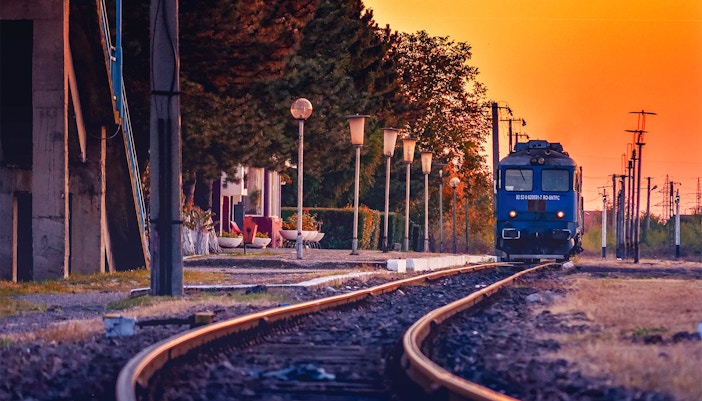
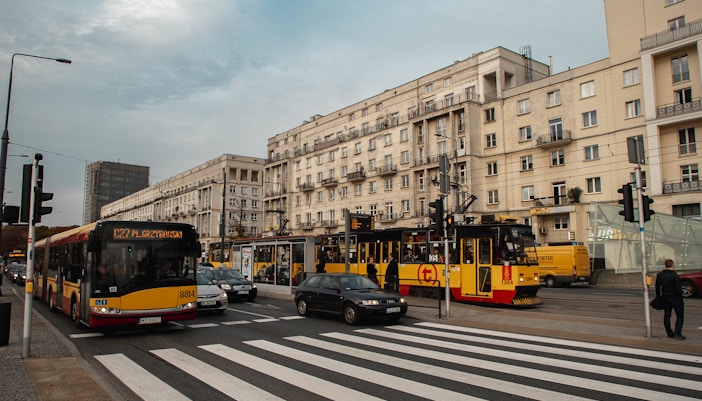
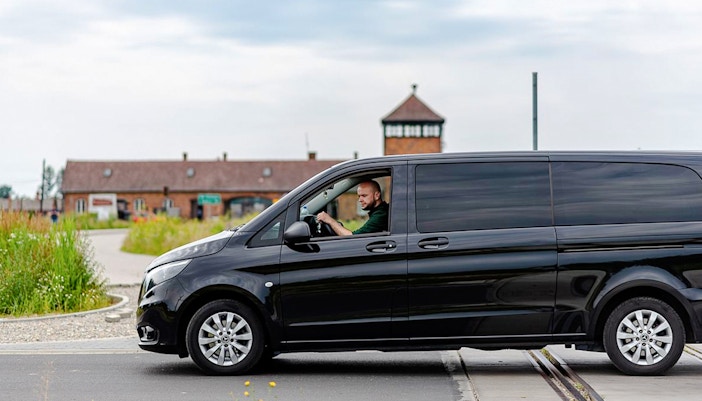
Knowing the history of Auschwitz and the Holocaust before your visit will help you grasp the scale of atrocities committed here and engage with the exhibits more meaningfully. Consider joining a virtual guided tour organized by the Auschwitz Museum to gain deeper insights before your visit.
Auschwitz is a place of remembrance and mourning, and many visitors come to mourn lost relatives, making the site emotionally charged. Approach your visit with respect, humility, and empathy—this means keeping conversations quiet, refraining from inappropriate behavior, and being discreet with photography.
Walking through Auschwitz can be deeply unsettling. The displays of personal belongings, gas chambers, and prisoner barracks make the horrors of the Holocaust painfully real. It’s common to feel sadness, disbelief, and emotional exhaustion after the visit, so take time afterward to process what you’ve seen.
Auschwitz covers vast areas involving significant walking (several kilometers) over uneven terrain such as gravel paths, dirt tracks, and cobblestones. For visitors with mobility issues, wheelchairs can be reserved at the Visitor Service Center in advance, though some historical sites may remain partially inaccessible due to preservation concerns.
- Night by Elie Wiesel: Memoir of a holocaust survivor.
- If This Is a Man by Primo Levi: A deeply personal survival account.
- The Librarian of Auschwitz by Antonio Iturbe: Based on the story of a teenage girl who risked her life to preserve books in Auschwitz.
- Schindler’s List (1993): Depicts the rescue of Jews from Auschwitz.
- Son of Saul (2015): Shows a haunting portrayal of Sonderkommando workers in Auschwitz.
- Auschwitz: The Nazis and the ’Final Solution’: A BBC documentary on the history of Auschwitz.
Choosing between a guided tour or a self-guided visit depends on your preference for historical context and convenience:
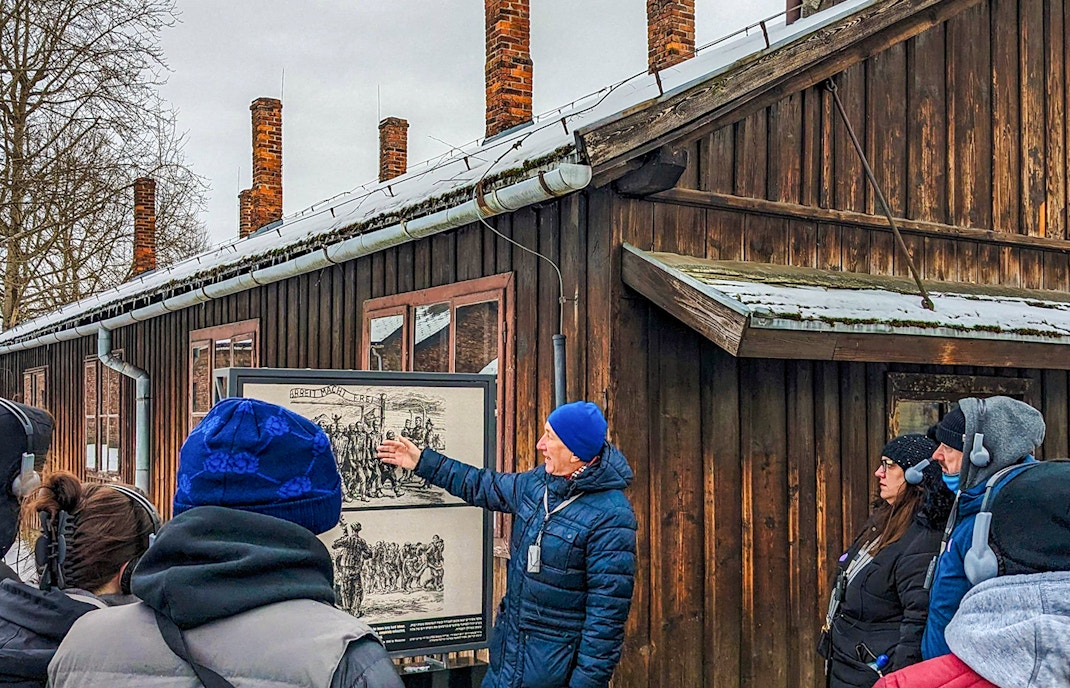
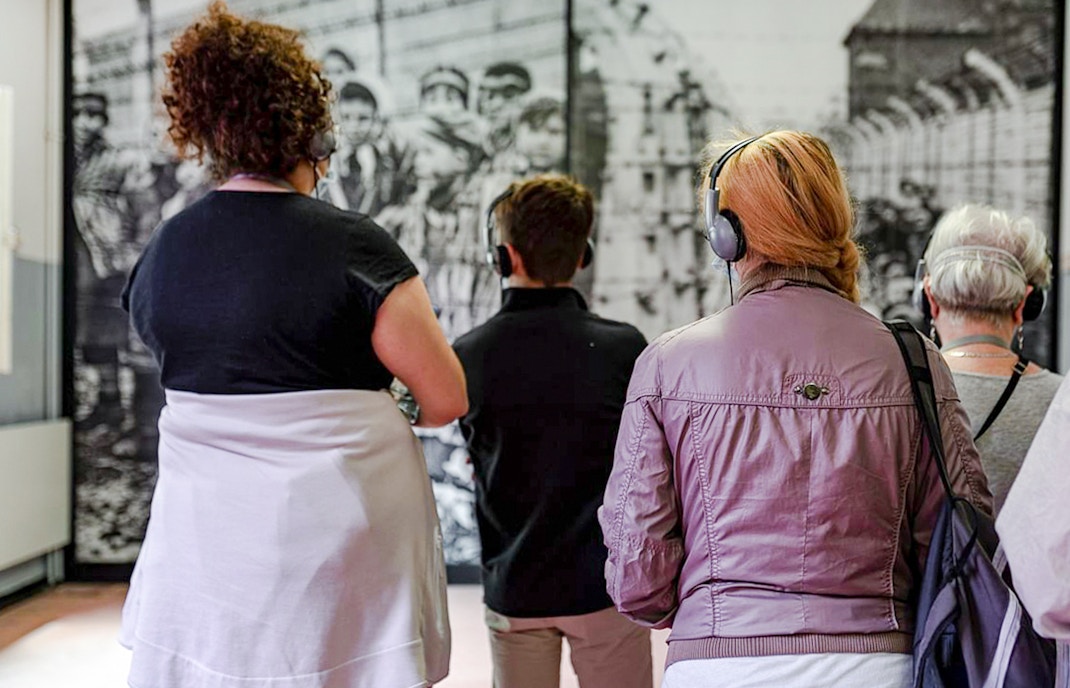
Security check & ticket validation: Your visit begins with security screening and ticket validation at the Visitors Service Center, which also provides facilities like restrooms, lockers, and information desks. Guided tour groups meet their guides here before starting the tour.
Start of the tour: Enter the site through the infamous ‘Arbeit Macht Frei’ gate and get a brief introduction to the camp’s history and role in Nazi Germany’s concentration camp system.
Highlights:
- Walk through prisoner barracks, showcasing original wooden bunk beds and living conditions.
View historical photographs, documents, and Nazi records.
See exhibits displaying personal belongings of victims, including suitcases, shoes, glasses, and children’s toys.
Infamous locations:
Block 11 (‘The Death Block’): This is the camp prison where prisoners were tortured and executed.
Gas Chamber and crematorium: This is the only surviving gas chamber in Auschwitz I, a stark reminder of mass executions.
Note: Auschwitz I involves a long walk of approximately 1.3 km, including a 600m straight passage and a 300m tunnel—the longest uninterrupted section of the tour.
Transfers to Birkenau: The 3.5 km distance between the camps makes walking impractical. You can take the shuttle bus (which runs frequently) or drive to the second site.
The Gate of Death entrance: The train tracks leading into Birkenau are the first sight upon arrival. This was the arrival point for thousands of deported victims.
Selection ramp: The rail tracks lead to the selection ramp, where SS officers decided who would be sent to forced labor and who would be immediately executed in gas chambers.
Highlights:
-Explore the remains of Crematoria II, III, IV, and V, destroyed by the Nazis before liberation.
-See the collapsed gas chambers, providing a haunting reminder of the genocide.
-Walk through rows of wooden and brick barracks where prisoners were held in overcrowded, inhumane conditions.
Memorial area:
-Visit the Auschwitz-Birkenau Memorial and Museum, dedicated to honoring the victims.
-Take a moment of quiet reflection here, as this is one of the most solemn parts of the visit.
Throughout Auschwitz I and Auschwitz II-Birkenau, plaques, exhibits, and memorial stones in multiple languages provide detailed historical context and personal stories of survivors and victims. Many visitors take time after their tour to reflect in silence or read the inscriptions left in memory of those who perished.
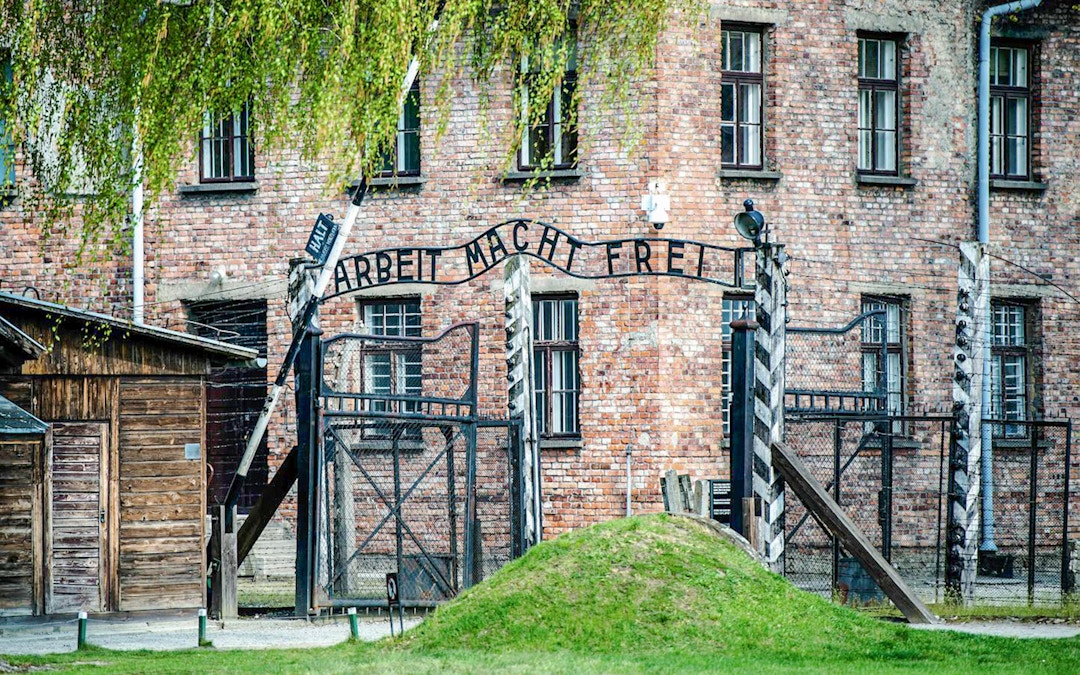
This well-known wrought-iron gate, which bears the haunting inscription "Arbeit Macht Frei" (Work Liberates), marks the entrance to the Auschwitz I camp.
This well-known wrought-iron gate, which bears the haunting inscription "Arbeit Macht Frei" (Work Liberates), marks the entrance to the Auschwitz I camp.
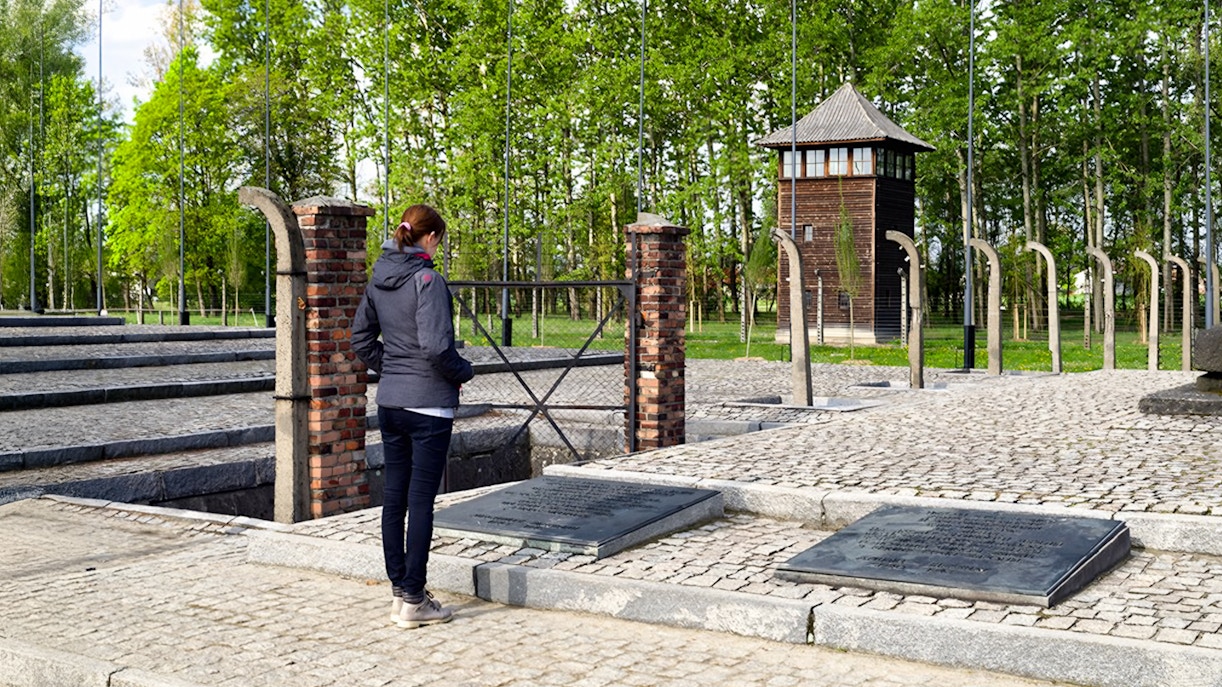

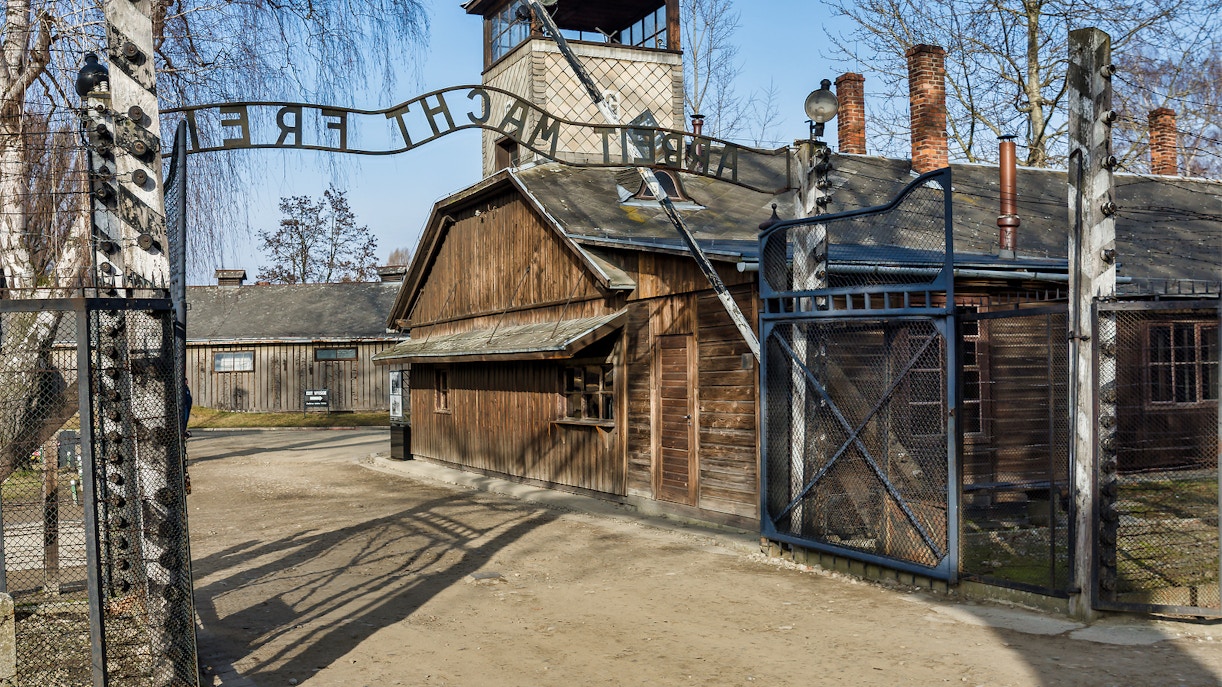
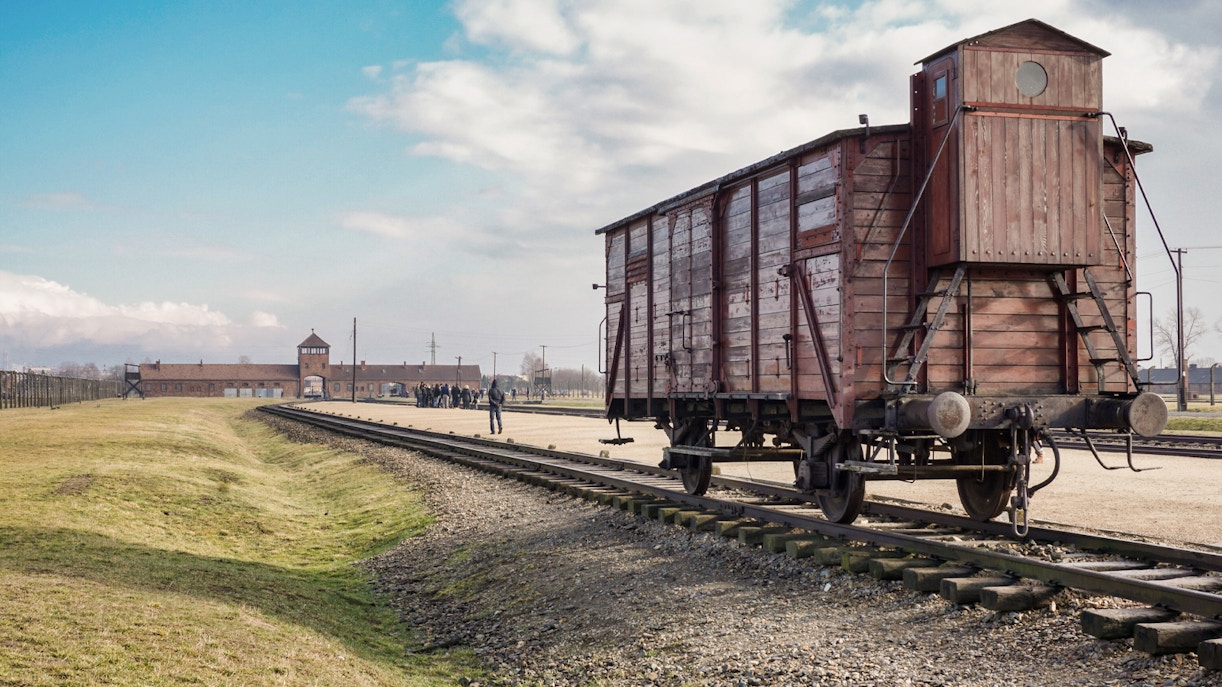
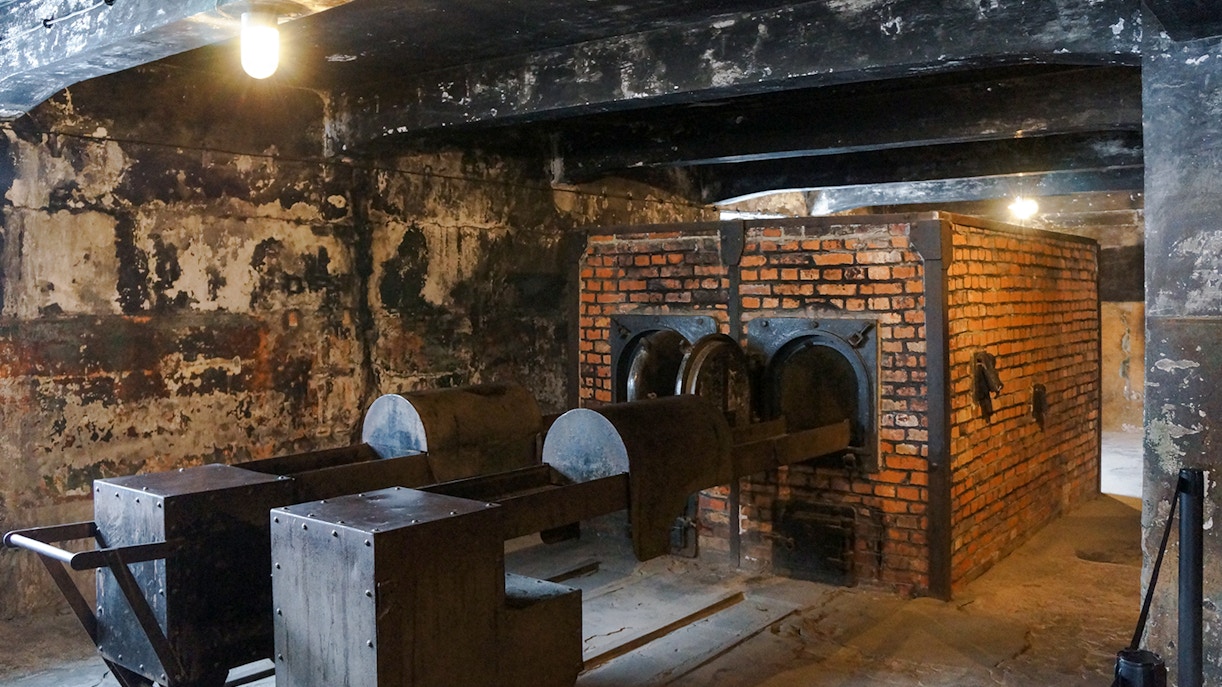


Auschwitz is approximately 70 kilometers from Krakow. The drive takes about 1 hour and 15 minutes. Trains and buses are also available, typically taking 1.5 to 2 hours each way.
Most visitors spend around 3.5-4 hours visiting Auschwitz I and Auschwitz II-Birkenau. Some visitors spend even longer for deeper reflection.
There’s no dress code, but you are expected to dress respectfully, keeping the historical significance of the place in mind. Since Auschwitz is an outdoor site with little shelter, dress according to the season. In winter, wear warm layers, gloves, and waterproof boots. In summer, wear light clothes and bring sun protection, as shade is limited.
No, Wi-Fi is not available in Auschwitz. Mobile signal strength can also be weak in some areas.
Yes, Auschwitz hosts annual memorial ceremonies, including International Holocaust Remembrance Day (January 27), the March of the Living, and other educational events. These days may have restricted access to certain areas.
Photography for personal use is allowed, but if you are filming a documentary, educational content, or commercial project, special permission from the Auschwitz Museum is required. Certain areas, such as the Room of the Hair of the Victims, prohibit any photography out of respect.
Yes, while many focus on the main sites, lesser-known areas like the ruins of the Central Sauna (Birkenau), the Kanada warehouses (where stolen possessions were sorted), and the experimental barracks in Auschwitz I provide additional insight into camp operations and prisoner experiences.
No. Consuming food is prohibited on the memorial grounds.
Refreshments are not offered during your visit to Auschwitz, but you can visit the cafeteria in Auschwitz I camp for a quick bite.
Auschwitz is in Poland.
Yes, visitors are welcome to leave flowers, candles, or small memorial tributes at designated areas, particularly near the Auschwitz-Birkenau Memorial. However, large displays or unauthorized plaques are not permitted. Candles should be placed carefully and never left burning unattended.
Information
All screenshots of maps found on this page are sourced from Google in accordance with fair use. All rights to such screenshots lie with the specific platform, and their use is solely for informational or guidance purposes.












